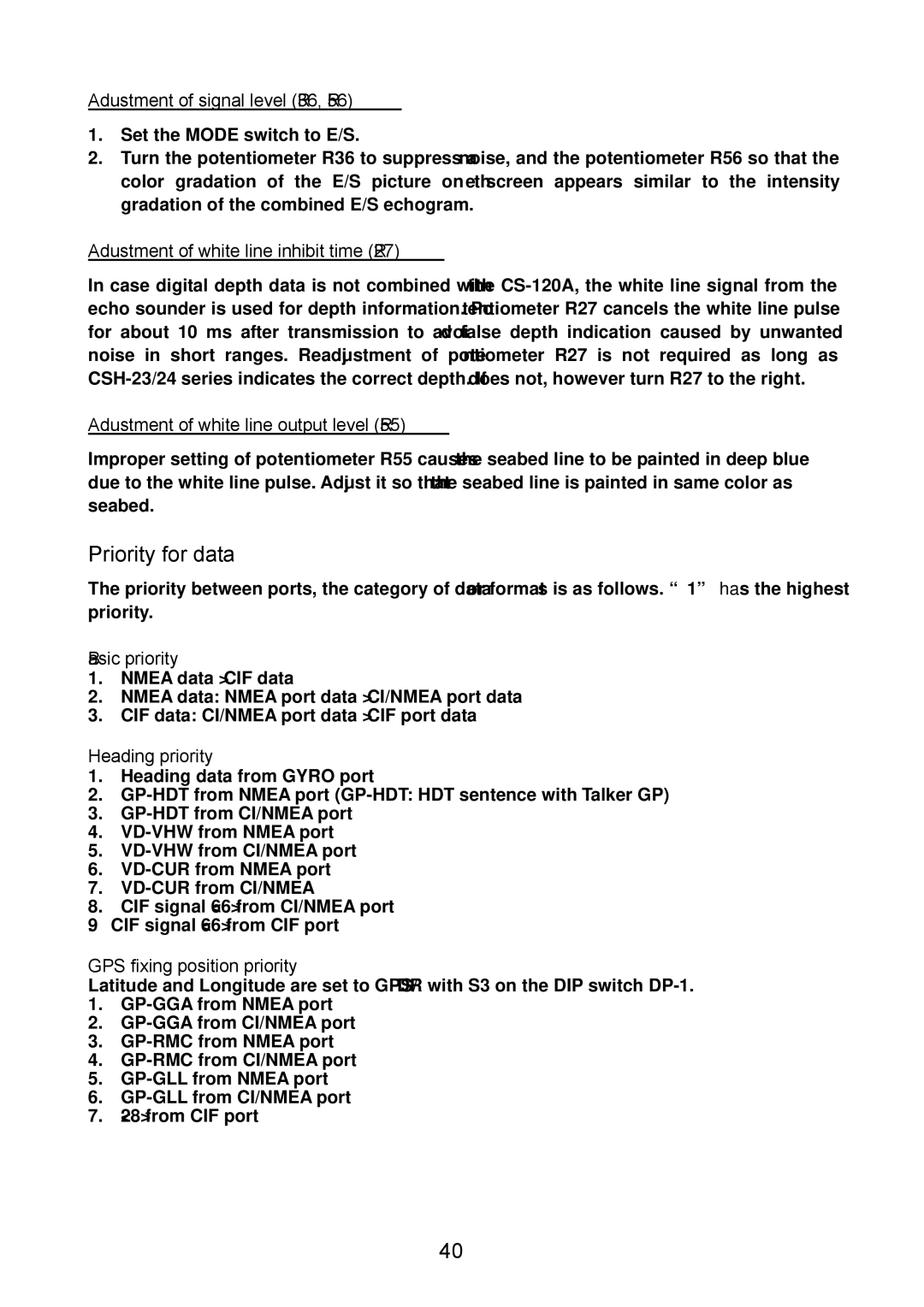CSH-24F, CSH-23F, CSH-23, CSH-24 specifications
Furuno, a leader in marine electronics, has developed a range of advanced marine radar systems known as the CSH series. The CSH-24, CSH-23, CSH-23F, and CSH-24F are particularly notable for their innovative technologies, designed to enhance navigational safety and operational efficiency for vessels of various sizes.The CSH-24 and CSH-23 models are known for their impressive 24 GHz and 23 GHz frequency bands, offering high-resolution imagery and enhanced target detection capabilities. These radars utilize Furuno’s digital signal processing technology, which significantly improves target discrimination, even in cluttered environments. This feature is invaluable for navigational safety, especially in busy waterways or coastal areas.
One of the key highlights of the CSH series is its advanced Automatic Radar Plotting Aid (ARPA) functionality, which enables the proactive monitoring of marine traffic. With the ability to track multiple targets simultaneously, mariners can make more informed decisions, avoiding potential collisions and ensuring smoother navigation. Additionally, the systems provide enhanced Tracking History that allows users to analyze target movements over time.
The CSH-24F and CSH-23F models incorporate Furuno's cutting-edge features, including Fast Target Tracking and Target Predictive Motion, which further enhances reactive capabilities. These radars also offer an intuitive user interface, making it easy to operate and customize settings to fit specific navigational requirements. The displays are designed for readability, even under challenging lighting conditions, thanks to advanced anti-glare technologies.
Built with ruggedness in mind, the CSH series is designed to withstand harsh marine environments. The robust construction and weatherproof design ensure that the systems perform reliably, regardless of sea conditions. Moreover, these radar systems are compatible with a range of marine integration options, allowing for seamless connectivity with other onboard navigation equipment.
In summary, the Furuno CSH-24, CSH-23, CSH-23F, and CSH-24F radars embody a blend of advanced technology, robust design, and user-friendly interfaces. These systems stand out in the marine electronics market for their reliability and precision, making them an excellent choice for maritime professionals seeking enhanced safety and efficiency on the water.
